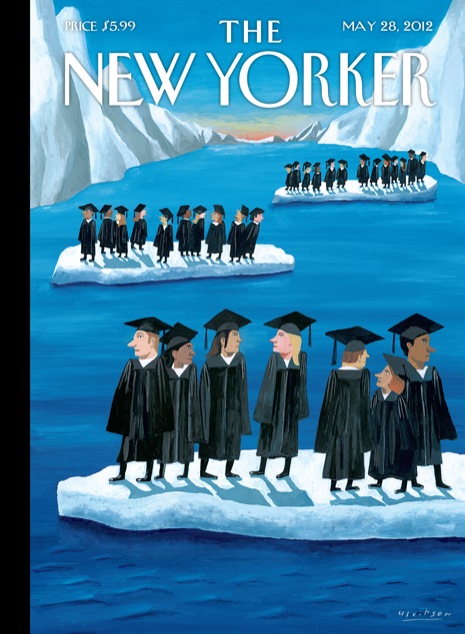Federal Judge Strikes Down Obama’s Assault on the Constitution
Under cover of New Years Eve last year, while the fewest Americans would notice, Barack Obama signed into law an act that disgraces his presidency.
In mid-May a federal judge appointed by Obama, Katherine Forrest of the U.S. eastern district in New York, ruled that the law is “facially unconstitutional”and enjoined it from going forward.
Section 1021 of the National Defense Authorization Act (NDAA) signed December 21, 2011 tramples the Constitution’s guarantee of due process, jeopardizes freedom of the press and discards the centuries-old guarantee that a suspect must be released from detention for lack of evidence. It allows the president to turn over to the military, rather than civil authorities, for indefinite detention without trial anyone, including American citizens, who is suspected of being a terrorist, to have had contact with a terrorist, or contact with “associated forces” or is suspected of giving “substantial support” to a terrorist organization.
Judge Forrest called such terminology unacceptably vague. Someone innocently contributing to a legitimate seeming organization that in fact has ties to al Qaeda could be swept off the street and disappear into the system for years — or for good.
The suit was brought by a group of citizen activists horrified by the law’s blatant violation of the civil rights set forth in the Constitution. Lead plaintiffs included Pulitzer Prize-winner war correspondent Chris Hedges, the outspoken public intellectual Noam Chomsky, and Daniel Ellsberg, best known for exposing the secret Pentagon history of the Vietnam War. The case was brought by lawyers working without fee.
By fighting the group in court, the Obama administration doubled down on its signing of the law, and is essentially saying that the criminal justice system, which has successfully prosecuted and incarcerated hundreds for terrorist activities, is inadequate and needs a parallel system free to ignore the Constitution and the hindrance of its civil rights guarantees. It is difficult to reconcile that a president who was a professor of constitutional law could condone a step toward fascism — where fascism is defined as the state being paramount and its citizens must therefore yield their rights for the supposed good of the state.
The government unsuccessfully tried to maintain that the group lacked “standing” to sue because none of them had been detained under the NDAA law — a stunning catch-22 considering that anyone so detained would have no access to the courts. The judge sided with the plaintiffs, who made the case that their most valuable work as journalists could entail contact with the enemy or whatever the government might choose to call “associated forces”, but fear of doing so would “chill” the pursuit of information and infringe on first amendment press freedom.
As example, The Guardian’s Naomi Wolf in this report said she was in court with her own affidavit making this claim, and to read into the record the testimony of Icelandic member of parliament and WikiLeaks activist Birgitta Jónsdóttir, who was absent on her government’s advice, fearful that she would be detained under this very NDAA law by a U.S. that had already confiscated her bank records and Twitter account and had refused to give assurance of safe passage in this contrary.
Government lawyers were challenged repeatedly by Judge Forrest to give assurance that members of the press or the other plaintiffs would not be subject to the law, citing a number of hypothetical examples such as (quoting Wolf) a “peaceful best-selling nonfiction writer who had written a hypothetical book criticizing US foreign policy, along lines theater the Taliban might agree with”. In no case could the two government lawyers state that the law would not apply. In her 85-page ruling the Judge wrote:
“The government was unwilling or unable to state that these plaintiffs would not be subject to indefinite detention under 1021. Plaintiffs are therefore at risk of detention, of losing their liberty, potentially for many years. An individual could run the risk of substantially supporting or directly supporting an associated force without even being aware that he or she was doing so. In the face of what could be indeterminate military detention, due process requires more.”
does congress understand the constitution?
The judge, however, has left the door open, asking Congress to clarify the vague language and Americans’ rights. Meanwhile, the House was taking up the very same issue — an amendment put forth by Representatives Adam Smith and Justin Amash, a Democrat from Washington and a Republican from Michigan, that would void the NDAA section’s detention without charge and its bypass of due process. The amendment was voted down 238-to-182 — almost all of the Republicans joined by 19 Democrats.
That the law was passed in the first place and now seconded by this vote provides the measure of those who Americans send to Congress. Texas Republican Mac Thornberry presumed to know that the “vast majority” of Americans “do not think telling them they have the right to remain silent … is a wise thing,”. Florida Republican Tom Rooney does not think terrorists should be given extra rights “if they manage to sneak into our country.” The issue is no rights not extra rights, and the vote says that congress members seem to assume that anyone detained under the NDAA law is guilty before the fact else why would they have been detained?
President Obama claims he will not use the law against American citizens, but his word is not the law, and is no defense for signing the law — a law that will outlive his presidency, as we reported in January in “Obama Signs a Terrible Law”. And he has shown elsewhere a disdain for First Amendment freedom as we reported here.
Some legal scholars view overturning the law as problematic because the law derives from Congress’ 2001 use of force authorization that gave the executive branch a free hand against those behind the 9/11 attacks. A war against terrorism that can be said never to end — there are always elements out there that loathe the United States for its unwelcome presence in their countries — gives the executive branch open-ended freedom to impose a parallel legal system to graft onto the war powers authorization. It is eleven years after 9/11 with Congress and the executive branch showing no inclination to relinquish their claim of national security as justification for ignoring the civil liberties protected by the Constitution. Indefinite detention without trial is to protect our freedom, you see.


